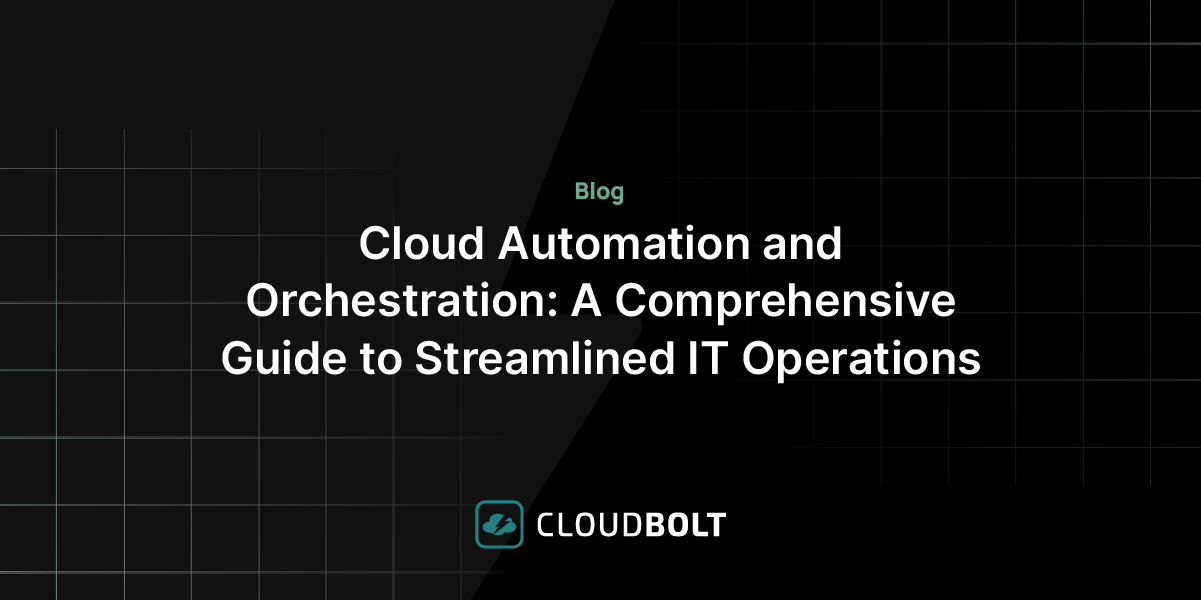Public University and Research Institution
Public University and Research Institution
Location: Eastern United States
Their Technology
Virtualization: VMware vCenter
Public Cloud: Amazon Web Services, Acquia Cloud Platform for Drupal
Configuration Management: Puppet, Homegrown Scripts
Operating Systems: RHEL, CentOS, Windows
VMs: 1500+
CloudBolt’s Competition
- VMware vCloud Automation Center
- Red Hat CloudForms
About the University
The University Office of Information Technology’s cloud team is responsible for fielding and supporting cloud-enabled technologies to faculty, staff, and students. They attempt to support instruction whenever possible.
Their Challenge
The cloud team is tasked to implement various cloud-based services, but was challenged to expose them to students and staff in a controlled and reliable manner. They needed a unified interface that would allow end users to find and request cloud services regardless if the services were provided by a public cloud provider or by existing university assets, and enable tracking and reporting of resource usage to better understand the impact of their work
CloudBolt’s Solution
Summary
- Automate provisioning and management of IT resources to faculty, staff, and students
- Present a tightly-controlled but flexible self-service IT platform
- Centralize control of resource utilization and reporting
- Eliminate VM sprawl
- Re-purpose surplus corporate IT to advance educational mission
- Flexible and burstable CloudBolt license model makes for predictable cost
Empower educators with surplus IT
With CloudBolt, the university was able to re-purpose surplus capacity from their corporate environments, and put it to use by educators — enabling students to access server and application resources to support their class work.
Customer satisfaction through better availability
As the demand for compute resources in support of Big Data and other compute-intensive workloads increases, faculty and staff are impatient in getting access to additional resources. CloudBolt replaces time-and resource-intensive manual processes by allowing end-users to drive the provisioning and server management process on their own.
End-to-end automation
Automating the routine provisioning and management meant systems administrators could do more with less, increasing the server to administrator ratio. Removing the people from the process also improved compliance, reduced OpEx costs, and significantly increased the pace at which the IT team was able to offer new services.
Cost and utilization transparency
Once CloudBolt imported the customer’s existing environments and servers, the university was able to determine which colleges and departments were using resources. The university was then able to re-assign budgets to better support demonstrated need.
Self-service access to non-traditional resources
Beyond just provisioning VMware and AWS EC2-backed servers, CloudBolt was easily configured to create S3 storage buckets in AWS, as well as provision Drupal accounts in the Acquia Cloud Platform for Drupal.
Multiple authentication points
University faculty and staff authenticate against a different Active Directory endpoint than the student population. CloudBolt’s multi-tenant capabilities ensure that every user is authenticated to the correct environment, and presented with the expected branding when logged in.
Customer Findings
✦ Seamless support of instructional needs
✦ Consolidated shadow IT systems reduces costs
✦ Student environment usage tracking, complete with automatic cleanup at semester’s end
✦ Rapidly integrate unique infrastructure and platforms offerings
✦ Multi-tenant solution unified management of disparate groups’ environments
✦ Provide access to enterprise instructional technology that mimics what students encounter in the career marketplace
CloudBolt’s selection was based on CloudBolt’s unique ability to rapidly integrate with non-traditional service providers. In the University’s case, they needed to make cloud-provided Drupal instances available to end users in an on-demand basis, while still accounting for cost transparency and access rights. While the competition claimed to be able to rapidly do this, CloudBolt was the only tool that was able to demonstrate this capability in the University’s own environment. CloudBolt enabled the University to consolidate shadow IT environments that groups turned to when they were unable to get access to centralized resources in a timely manner. Providing on-demand centralized access, management, and provisioning of IT resources also enabled the University to achieve better economies of scale as they extended their offerings to a larger faculty, staff, and student population. Furthermore, the ability to add elastic public cloud-based resources enabled the cloud team to flexibly account for peaks in demand based on enrollment. Integrated reporting ensured accurate cost accounting.
The cloud team’s use of CloudBolt to provide on-demand IT resources from a variety of managed environments has made them the de-facto IT architecture thought leaders at the University. IT teams such as the Windows group now look toward the cloud team’s offerings as the reference architecture for how to properly implement cloud-based services in varied and disparate environments. Thanks to its selection of CloudBolt, the cloud team has increased their organizational capital.
Related Blogs

Cloud Automation and Orchestration: A Comprehensive Guide to Streamlined IT Operations
As businesses increasingly adopt cloud technologies, managing these environments has become more complex. To optimize resources, reduce costs, and accelerate…

